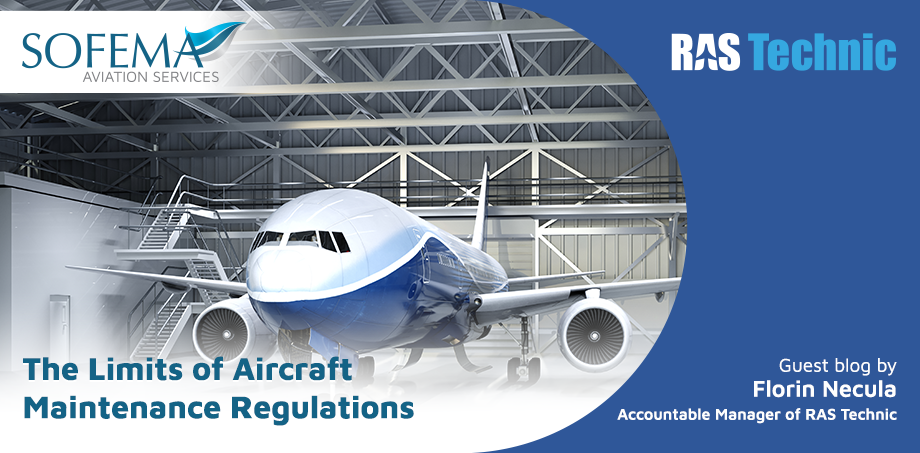By Florin Necula, PhD, Maintenance Postholder at RAS Technic
Introduction
Aircraft maintenance is a highly regulated field, with safety as its ultimate goal. Authorities such as the European Union Aviation Safety Agency (EASA) and the Federal Aviation Administration (FAA) govern this sector through detailed regulations to minimise risk and ensure that maintenance tasks are performed correctly. However, these procedures’ growing complexity and sheer volume raise important questions about their efficacy. As the aviation industry continues to add more procedures in the name of safety, a key concern is whether this leads to a genuinely safer environment or instead creates unintended cognitive and operational challenges. The aim of this essay is to argue that adding more procedures to an already tightly controlled environment does not necessarily enhance safety. Instead, a balanced approach is required to avoid overloading personnel and to address the cognitive limitations of human operators.
The Importance of a Balanced Number of Procedures
Procedures are fundamental in aircraft maintenance for ensuring that tasks are carried out correctly and consistently. They serve as a safety net for complex operations, ensuring that important steps are not overlooked. However, as Dekker (2003) notes in his work on human error and safety, “more is not always better.” While procedures provide structure, too many can lead to confusion, fatigue, and a reduction in attention to detail. In aviation, where both time pressure and precision are critical, having too many or overly complex procedures can slow down decision-making and diminish the flexibility required to deal with unexpected situations.
Procedures, by design, are meant to mitigate risks, but excessive procedures can create an administrative burden. In an environment where maintaining a balance between rules and human judgment is crucial, over-reliance on rules can lead to a decline in both adaptability and safety (Dekker, 2014).
Risks of an Excessive Number of Procedures
One of the most significant risks of having too many procedures is “procedure fatigue,” where employees become overwhelmed by the sheer number of tasks and instructions they are required to follow. In high-pressure environments, such as aircraft maintenance, this can result in procedures being ignored or “pencil-whipped” (i.e., marked as complete without being fully executed) (Reason, 1997). This practice is dangerous because it gives a false sense of security and can undermine the entire safety system.
A similar issue has been studied extensively in healthcare, where adding more procedures has not necessarily resulted in better patient outcomes. According to Amalberti et al. (2006), an overemphasis on procedural adherence in healthcare can “paradoxically increase risks by reducing the ability of practitioners to improvise and adapt to complex or unexpected situations.” This has clear parallels in aviation, where maintenance engineers must often deal with unforeseen problems that are not easily addressed through a rigid set of procedures.
Furthermore, studies from ergonomics and cognitive psychology highlight the human limitations in multitasking. The cognitive load theory (Sweller, 1988) emphasizes that humans have a limited capacity for processing information, particularly when it involves both reading and performing tasks simultaneously.
In the context of aircraft maintenance, engineers must frequently consult manuals and procedural documents while performing intricate troubleshooting and repairs. This creates a cognitive overload, where too much information impairs the operator’s ability to focus on the task at hand (Wickens, 2008).
The Limited Effectiveness of Procedures in Enhancing Safety
Sydney Dekker (2005), a renowned expert in safety and human factors, argues that the assumption that more rules automatically make operations safer is flawed. In fact, procedures are limited in their effectiveness because they cannot anticipate every possible situation. For example, while procedures outline specific steps for routine maintenance, they may not account for non-standard scenarios, such as unexpected system failures. In such cases, rigid adherence to procedures may prevent skilled engineers from using their experience and judgment to resolve the issue effectively.
This issue is compounded by the fact that procedures are often written by individuals far removed from the day-to-day realities of aircraft maintenance. Many regulations are designed by legal teams or regulatory bodies rather than field experts with direct experience in maintenance operations (Le Coze, 2013). The disconnect between the authors of these procedures and the professionals who must implement them can lead to impractical or overly complex instructions that do little to enhance safety.
Moreover, studies in human factors and ergonomics have shown that memory limitations and the inability to manage concurrent tasks can further reduce the effectiveness of procedures. The human brain can only hold a limited amount of information in working memory (Miller, 1956), which means that trying to remember and follow too many procedural steps at once can lead to errors. For example, Reason (1990) suggests that maintenance tasks that involve multiple steps spread across different sections of a manual increase the risk of omissions or incorrect execution.
Lessons from Other Industries: Health and Care
Other high-risk industries, such as healthcare, have faced similar challenges. In healthcare, there has been a tendency to rely on increasing the number of procedures and protocols to improve patient safety. However, research by Amalberti et al. (2006) shows that this approach can lead to “procedural inertia,” where medical professionals become less able to respond flexibly to unusual circumstances because they are so tightly bound by rules. This resonates with findings from aviation, where adding more procedures may limit an engineer’s ability to think critically and adapt to non-routine situations.
In both healthcare and aviation, a “safety bureaucracy” emerges, where the focus shifts from actual safety to compliance with rules. While procedures are necessary for ensuring baseline safety standards, excessive reliance on them can create a culture of procedural compliance over genuine safety vigilance. Both industries highlight the importance of a balance between rules and human judgment to maintain flexibility and improve real-world safety outcomes.
EASA and the Growing Complexity of Regulations
The European Union Aviation Safety Agency (EASA) continues to develop and implement regulations to ensure aviation safety. However, a growing concern is that many of these regulations are developed by legal professionals rather than by field experts with direct operational experience. As a result, many rules may be disconnected from the practical realities of aircraft maintenance, leading to inefficiencies and a false sense of security.
Critics argue that EASA’s increasing number of rules and regulations, though well-intentioned, might be reaching a point of diminishing returns. By focusing on procedural compliance rather than practical, real-world safety improvements, the agency may be contributing to a system where engineers are more concerned with adhering to the letter of the law than with ensuring that aircraft are truly safe to fly. This echoes Dekker’s (2003) concept of the “bureaucratization of safety,” where compliance becomes a goal in itself, potentially at the expense of real safety outcomes.
Conclusion
In conclusion, while procedures are a vital component of aviation safety, more is not always better. There is substantial evidence from both aviation and other high-risk industries, such as healthcare, that adding more procedures does not necessarily enhance safety and can even increase risks by overloading operators, reducing flexibility, and fostering a culture of compliance rather than critical thinking. EASA’s current trend toward increasing procedural complexity, driven largely by legal professionals, may not be the best path forward. A more balanced approach, where procedures are seen as guidelines rather than rigid rules, and where human judgment and expertise are given more room to operate, may be the most effective way to enhance safety in aircraft maintenance.
References
- Amalberti, R., Auroy, Y., Berwick, D., & Barach, P. (2006). Five System Barriers to Achieving Ultrasafe Health Care. Annals of Internal Medicine, 142(9), 756-764.
- Dekker, S. (2003). The Field Guide to Human Error Investigations. Ashgate.
- Dekker, S. (2005). Ten Questions About Human Error: A New View of Human Factors and System Safety. CRC Press.
- Le Coze, J. C. (2013). New models for new times: An anti-dualist move. Safety Science, 59, 200-218.
- Miller, G. A. (1956). The Magical Number Seven, Plus or Minus Two: Some Limits on Our Capacity for Processing Information. Psychological Review, 63(2), 81-97.
- Reason, J. (1990). Human Error. Cambridge University Press.
- Sweller, J. (1988). Cognitive Load During Problem Solving: Effects on Learning. Cognitive Science, 12(2), 257-285.
- Wickens, C. D. (2008). Multiple Resources and Mental Workload. Human Factors, 50(3), 449-455.




